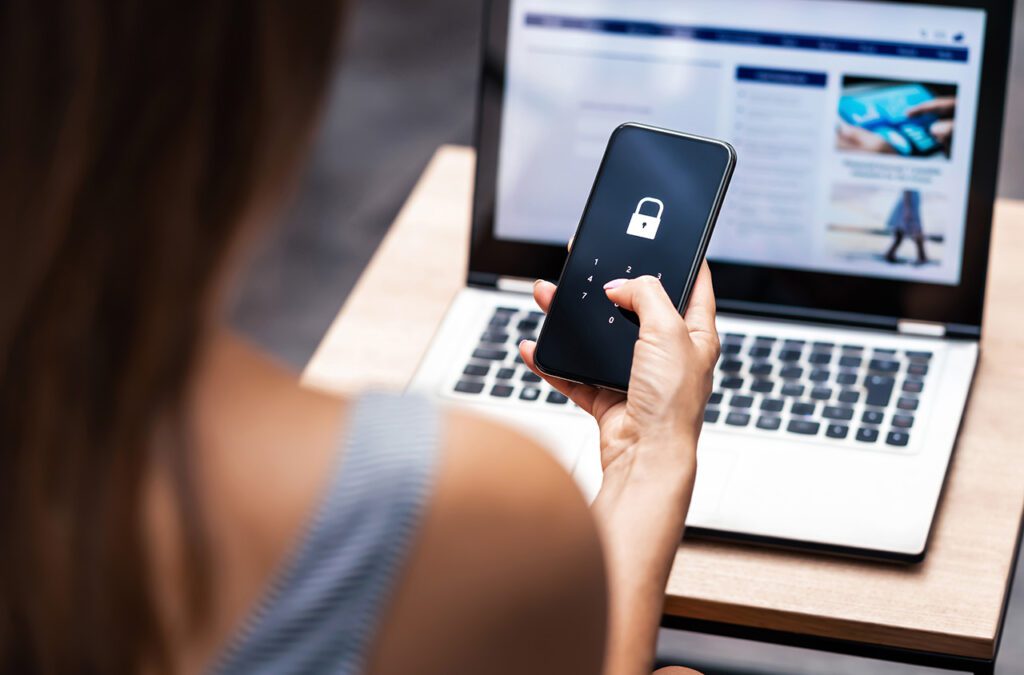
Avoid becoming a victim of a banking cyberattack by learning the common ruses scammers use, and taking measures to keep your accounts safe from hackers. Cybercriminals use bank accounts for various fraudulent activities, from unauthorized withdrawals to online purchases or even laundering money in your name—all of which have devastating effects.
Cybercriminals commonly pose as financial institutions to gain access to checking or savings accounts. In order for scammers to be successful, they need your help. Improve your online banking security by understanding what to watch out for and how to distinguish imposter activity from a legitimate request using these tips:
Learn the Questions Banks Won’t Ask
While a bank may request information to verify your identity when you contact it for help with an account, financial institutions will not contact you unexpectedly and request personal details by telephone, text message, or email. Always be suspicious of messages asking you to provide any information about yourself or your accounts. Never answer these requests. Instead, call your bank to verify. Here are the questions your bank won’t contact you to ask (but a cybercriminal will):
- Account Number(s)
- Username and Password
- Your PIN
- Your Social Security Number
- Your Birthdate
- Your Address
- Answers to security questions
Know How To Spot Imposter Websites
A common hacker trick is to create an imposter website that mimics a secure banking website. Entering your username and password on a fake site gives hackers all the information they need to take control of your bank account. Use these online banking security tips to spot fraudulent sites or mobile apps:
- Verify the web address against a bank statement or other document and bookmark it so you do not need to rely on memory.
- Download a mobile banking application only from a reputable app store and check that the app developer’s name matches your bank.
- Never click on a link sent via a text message or email to log into your bank account.
Watch for the Red Flags of Phishing Attempts
Phishing scams—fraudulent emails or texts—often include a link or attachment with malicious code, and when clicked, it will download malware onto your device. This gives hackers access to your bank account, mobile apps, and other personal information, and it can even lock you out of your device. Thankfully, cybercriminals often leave warning signs in these messages that consumers can learn to recognize through these red flags:
- Misspellings and typos
- Included attachments and links to outside sites
- Requests for personal information (e.g., a PIN, password, or Social Security number)
- A provided link to download an app
- Urgent, fear-inducing language in the message
If any messages sent on behalf of your bank to your cellphone, email, or via telephone seem suspicious, contact your financial institution to confirm the legitimacy immediately.
Be Skeptical of Emails and Texts
Treating every incoming email or text as a potential risk can halt you from opening a malicious message that may jeopardize an online bank account. While it may seem like overkill to approach your inbox this way, fraudulent messages can look and sound convincing. If you don’t spot typos and other red flags in the body copy of the email or text, watch for messages that:
- Ask you to confirm or supply personal information or account numbers
- Alert you to suspicious activity and ask you to log in
- Request updates for associated credit cards or online payment accounts
- Provide an electronic bill for services you don’t recognize
- Ask you to register to have a refund or bonus deposited into your account
- Offer coupons for free items or items that seem too good to be true
Practice Secure Banking Habits
Watching for scams is only one piece of the puzzle when it comes to making your online and mobile banking safer. Locking your devices and accounts behind password protections and using antivirus software are also ways to help keep your personal information under wraps. Make these best practices habits to help protect your digital banking accounts from cyberattacks and hacking:
- Use strong, unique passwords
- Change passwords regularly
- Download mobile banking applications from legitimate app stores
- Enable multi-factor authentication
- Keep device software and network security updated
- Avoid banking on public Wi-Fi networks and shared computers
- Set up alerts for bank account activity
- Monitor your accounts frequently and be wary of any unusual activity—even deposits
- Report any suspicious activity to your bank immediately
At The Southern Bank, we pride ourselves on offering friendly, personalized service, which includes expert guidance when you suspect fraudulent activity on your account. We’re happy to offer convenient digital banking services, with monitoring capabilities and security features. Learn more about our personal banking services or visit one of our local branches for friendly, in-person service with a smile.